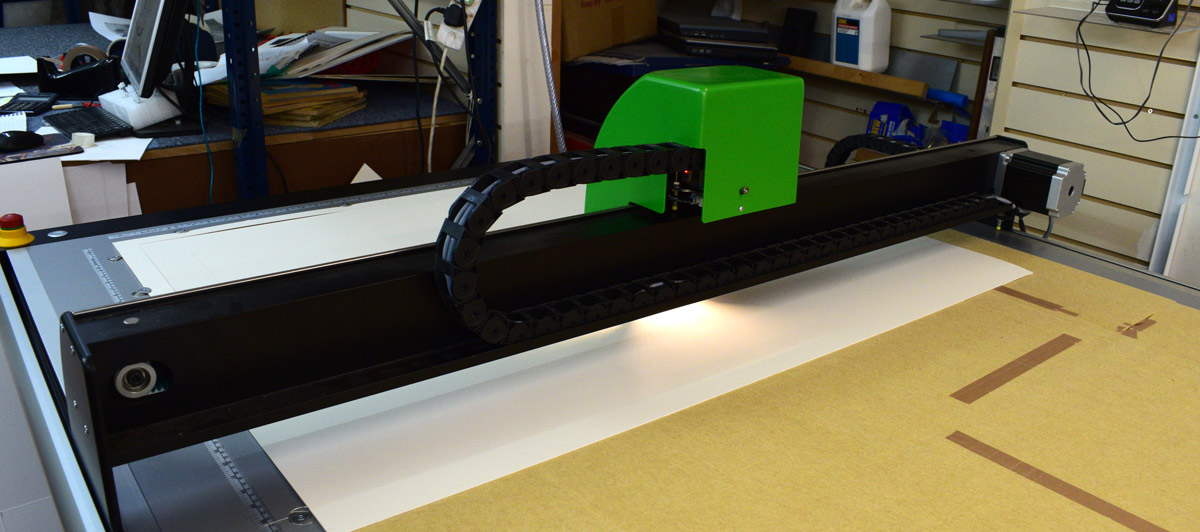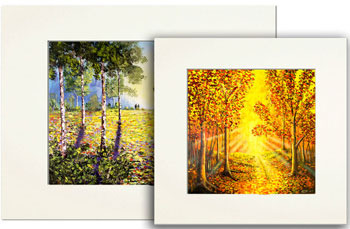Making a Giclee Print
What is Giclee
The word Giclée (“g-clay”), is derived from the French verb gicler meaning “to squirt or spray and describes a fine art digital printing process combining pigment based inks with high quality archival quality paper to achieve an inkjet print of superior archival quality, light fastness and stability
Giclee printing should not be confused or even compared to standard digital printing .Giclee is a premium service at 1200 dots per inch, and printed with 12 colours using long life archival pigment inks (claimed to be in excess of 100 years lifespan) this gives great colour accuracy. Anything reproduced with Giclee printing is recognisable at a glance because of its visual quality, the graduation and range of colour, lack of lines and barring.
My printer of choice.
My printers are Castle Framing in the market town of Brampton only a few minutes drive from my village studio. Castle Framing is a Cumbrian based art gallery and reseller of art. I have used Castle Framing for my printing and framing for many years now, and I have that full confidence only gained from a long and successful partnership. But, just how does a painting on canvas or wood panel get to be a digital print. I thought it might be interesting to briefly describe my process at least
Photographing artwork.
Drum Scanning is probaly still the primary method of capturing artwork into a digital file, a very accurate way of obtaining a good reproduction and used by magazines, high end productions, galleries and highly successful artists.
However, the advances in Digital SLR Cameras and computer software have allowed artists to photograph their artwork in very high quality, and more importantly allows them to keep full control of the digital process. This was certainly the prime reason I decided to learn the skills to obtain my own digital files, having the ability to track my artwork from brush to print was an important choice for me.
However, the process is not that simple and demands an article in its own right to explain lighting, camera settings, file formats and image manipulation, definitely too big a subject for inclusion here, but one I will cover in more detail in a future article.
Anyway, after my artwork is photographed and I am happy with the images in my image editing software, I send them off to Castle Framing for proofing to ensure the reproduction by the printer matches the original as close as possible.
We usually try and proof several artworks at one go by printing them as 10 x 8 inch prints and Mike, the owner of Castle Framing who is highly experienced in setting up your digital image correctly , checks alongside myself that the results are faithful to the original, tweaking where neccessary to ensure a good reproduction of my work. If all the checks pass scrutiny then the images are saved as print files to my artists account ready for future print requests
To print a run Mike brings up the images requested and programmes the correct dimensions , paper type and number of copies as requested by the customer and sends off the run to the digital printer to begin the print process.
This can be anything from a single print to as many are requested by his customers, the print run does not need to be a single image but can be multiple artworks as well

Once the print run is complete and checked yet again for quality and no errors, they are taken to the workshop to be cut and separated into individual prints. I like to come into the workshops to personalise my artwork by hand signing them, adding any limited edition numbers and not only providing that personal touch but once again seeing the whole process through end to end.

Mounting the Image
The correct mount sizes for each print are now programmed into a state of the art computerised mount cutter. This amazing machine can automatically cut out perfect crisp mounts as well as very complex shapes, including texts to create wonderful overlay effects. This machine can have a variety of uses for presentaion and display items, so contact Castle Framing to discuss options

Mount is added to your print , if it was purchased as print only it will be packaged in a bio degradable sleeve ready for delivery to you. However if you have ordered as a framed print the next process is to choose the mouldings and build the frame

Framing
If you have ordered a framed print then the mouldings of your choice is selected and cut to correct lengths

After the mouldings have been cut using the powerful guillotine to get those perfect mitred corners, the moulding are assembled and pinned

Your framed print is ready to take the glass and be finished prior to collection or delivery.

Explaining Open and Limited Edition Prints

About limited edition prints
All prints are supplied in high quality mounts ready to pop into a frame
As the name suggests, only a limited number of hand signed and numbered prints can be made available for purchase. For example, I decide to sell a limited run of 25 prints, once sold that limited edition will no longer be available. The exclusive nature of a limited edition print effectively raises its value and, therefore, its price reflects that.
About open edition prints
Unlike limited edition prints, open edition prints may be endlessly reproduced. Because there's no limit to the number of prints that can be made, an open edition print is therefore priced lower than a limited edition prints
